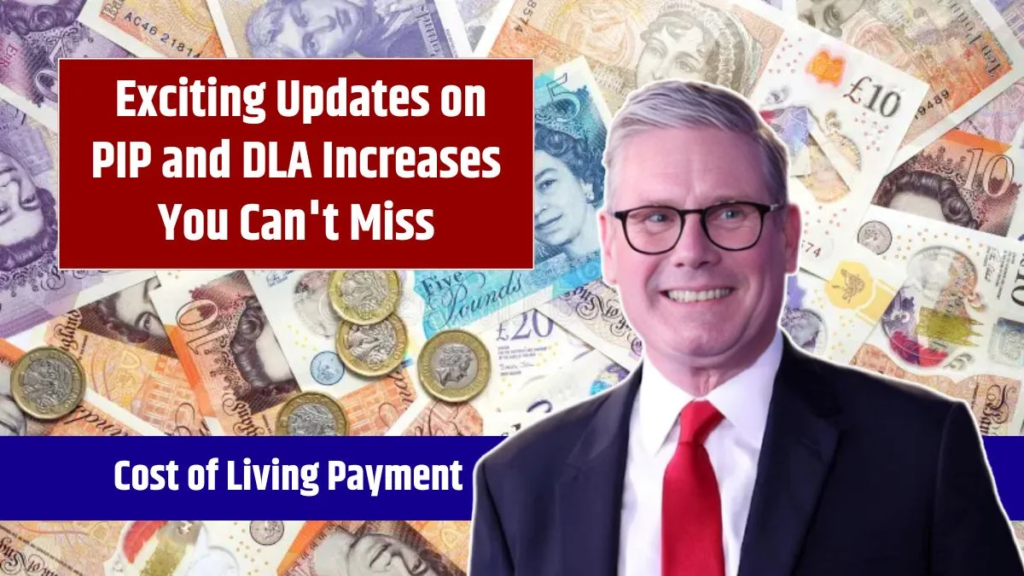As the cost of living continues to rise in the UK, the Department for Work and Pensions (DWP) is expanding its efforts to support vulnerable households through the 2025 Cost of Living Payment scheme. With increased rates for key disability benefits like PIP and DLA, and the continuation of vital support funds, this initiative aims to help low-income families, pensioners, and individuals with disabilities stay afloat amid inflation and rising energy prices.
Let’s break down what’s changing, who qualifies, and how to make the most of these government-backed payments.
What Is the DWP Cost of Living Payment for 2025?
The 2025 Cost of Living Payment is part of the UK government’s plan to reduce financial pressure on millions of households. It’s targeted at individuals on certain income-based benefits and includes additional support for those living with disabilities.
These payments are made automatically to eligible recipients—no need to apply.
Key Support Programs in 2025:
- Cost of Living Payment for benefit claimants
- Disability Cost of Living Payment for those on PIP or DLA
- Pensioner Cost of Living Payment
- Household Support Fund (extended through 2025)
Who Is Eligible?
To receive the 2025 Cost of Living Payment, you must be claiming at least one of the following benefits during the DWP’s qualifying period (to be announced officially):
- Universal Credit
- Pension Credit
- Income Support
- Income-based Jobseeker’s Allowance (JSA)
- Income-related Employment and Support Allowance (ESA)
- Working Tax Credit or Child Tax Credit
- Personal Independence Payment (PIP)
- Disability Living Allowance (DLA)
Payments are deposited directly into your bank account—just ensure your benefit records are up to date with DWP.
What’s New for PIP and DLA in 2025?
Starting 7 April 2025, PIP and DLA rates will increase by 1.7% to help offset inflation. These benefits are crucial for individuals with long-term health conditions or disabilities, covering additional living and mobility costs.
Example of Updated Weekly PIP Rates:
| Component | 2024 Rate | 2025 Rate (1.7% increase) |
|---|---|---|
| Daily Living (enhanced) | £108.55 | £110.40 |
| Daily Living (standard) | £72.65 | £73.88 |
| Mobility (enhanced) | £75.75 | £77.04 |
| Mobility (standard) | £28.70 | £29.19 |
Top Rate (combined PIP weekly support): Up to £749 per week for those qualifying across multiple components.
How to Apply for PIP or DLA
If you aren’t currently receiving PIP or DLA but believe you may qualify:
- Apply online or call the DWP PIP claim line.
- Complete a health assessment (medical evidence may be required).
- Await your award letter and payment schedule.
Keep an eye on the official DWP site for updates on qualifying periods and guidance.
Tips for Maximizing DWP Support
- Check eligibility: Even if you weren’t eligible last year, rule changes or life changes may qualify you now.
- Budget wisely: Use these payments to cover essentials—especially energy bills, food, and transport.
- Seek local support: Some councils offer additional financial help through discretionary funds.
Why It Matters
With energy bills, rent, and food prices continuing to strain household budgets, these payments offer vital relief. The 2025 Cost of Living scheme ensures that people who need help the most—including disabled individuals and low-income families—can better manage the financial pressures ahead.
By automatically issuing payments and increasing benefit rates, the government aims to provide stability and support during challenging economic times.
FAQs
When will the 2025 Cost of Living Payment be made?
Dates are yet to be confirmed, but payments will roll out in multiple installments starting from spring 2025.
Do I need to apply?
No. If you’re eligible, will be made automatically.
What if I think I’m eligible but didn’t receive a payment?
Contact the DWP or check your benefit status. There may have been an issue with your qualifying period or benefit claim.
How much will the Disability Cost of Living Payment be?
Exact figures will be confirmed soon, but additional support will be provided on top of standard disability benefits.















